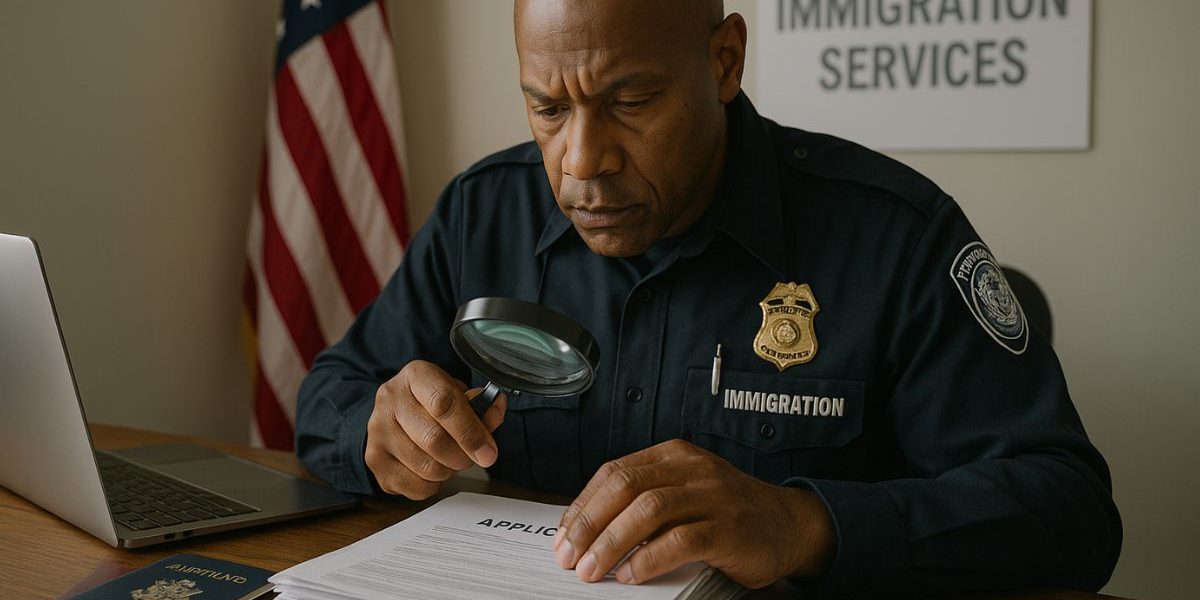Immigration systems rely on the trust and truthfulness of applicants. Yet with growing volumes of paperwork and increasing complexity, fraud detection has become a necessary part of the vetting process. From forged documents to misrepresented facts, immigration authorities are constantly on alert for irregularities that can compromise the integrity of legal pathways. For applicants who are sincere and well-intentioned, this process may feel rigorous—but it’s also an important layer of protection that ensures fairness and national security.
Understanding how fraud is detected can help applicants avoid unintended errors, and it also sheds light on why certain applications face delays or rejections. For policymakers and the public, this subject offers a glimpse into the balance between efficiency and vigilance in immigration procedures.
What This Post Covers
This article explains how immigration fraud is detected, what red flags authorities watch for, and how technology and data checks play a growing role. We also look at the human side of this process: how it affects applicants, and the policy decisions that guide enforcement.
You’ll learn:
- What counts as fraud in immigration filings
- How applications are reviewed and verified
- Tools and techniques used to detect false information
- Why accountability matters for applicants and systems alike
What Counts as Immigration Fraud?
Fraud in this context includes more than fake passports. It might be someone misreporting marital status, inventing a job history, using false identities, or claiming asylum on fabricated grounds. Even withholding certain facts—like prior deportations or criminal convictions—can be treated as a form of deception.
Authorities are especially watchful with applications involving family ties, employment-based sponsorships, and asylum requests. These are areas where personal narratives or documentation play a central role, which makes them more vulnerable to manipulation.
How Applications Are Reviewed
Every immigration system has checkpoints. Whether someone is applying for a visa, green card, or asylum, the application goes through multiple layers of review. This includes checking the accuracy of documents, cross-referencing data with other agencies, and conducting interviews when needed.
Officers are trained to notice inconsistencies. Does the applicant’s story change between different forms? Do submitted documents follow expected formats for their country of origin? Is the address history too vague or hard to verify? Small inconsistencies, when added up, may trigger closer scrutiny.
These layers of scrutiny are designed to ensure both fairness and security. While most applications are genuine, immigration systems must be equipped to detect fraud or errors without unfairly penalizing those who make honest mistakes. That’s why clear communication, access to translation services, and legal support are vital.
They help applicants present their case accurately and avoid being misunderstood due to language barriers or unfamiliarity with the process. At its best, a well-run system filters carefully without losing sight of the human story behind each file.
The Role of Technology in Spotting Fraud
Digital tools have added precision to the review process. Machine learning systems can flag unusual patterns across applications, such as repeated use of the same sponsor, address, or financial backer. Databases like SEVIS (used for tracking students) or biometric systems such as IDENT (for fingerprints) allow for quick identity validation.
Still, these tools don’t work alone. A flagged item may simply mean a closer look is needed—not an automatic rejection. Caseworkers still use their judgment to assess context and intent.
This human-machine partnership helps balance efficiency with fairness. While algorithms can rapidly detect anomalies, only trained officers can interpret them within real-life contexts—like cultural naming conventions or shared housing among relatives.
Relying solely on automation risks overlooking nuance, but ignoring technology would slow down already burdened systems. When used responsibly, digital tools empower caseworkers to make better-informed decisions without losing the personal touch that justice requires.
Red Flags That Raise Concerns
Not all issues in an application are treated the same. Some common red flags include:
- Fake or altered documents, such as birth certificates or job letters
- Inconsistent dates between forms and declarations
- Answers that appear memorized or scripted during interviews
- Multiple applications tied to a single sponsor or address
- Sudden changes in employment or relationship claims
Sometimes these patterns emerge because of honest mistakes, language barriers, or misunderstanding the process. But when there’s intent to deceive, the consequences can be serious: application denial, removal proceedings, and even bans from future entry.
Why This Matters for Policy and Public Trust
Fraud prevention isn’t only about catching bad actors—it also protects legitimate applicants and supports the credibility of the system. If people lose confidence that immigration rules are applied fairly, the entire structure becomes more vulnerable to political pressure and public skepticism.
This is why many countries invest in improving fraud detection tools, while also providing clear guidance to applicants about documentation requirements and review standards. A transparent process helps everyone: it speeds up decision-making, reduces backlog, and focuses resources on genuine cases.
Impact on Applicants and Case Outcomes
For honest applicants, a system that includes fraud checks might feel burdensome at times. But understanding what officers look for can make the process smoother. Keeping records clean, submitting accurate paperwork, and preparing for interviews are all part of a solid application.
Mistakes can be corrected when caught early, especially if the applicant is proactive. But patterns of misinformation—whether intentional or not—can result in long-term consequences, including delays, higher legal costs, or negative entries on one’s immigration record.
Closing Thoughts
Immigration fraud detection is a balancing act. It’s about weeding out deception while still offering a fair chance to those seeking a better life. As governments fine-tune their systems, and as technology sharpens their tools, the responsibility also falls on applicants and representatives to keep the process honest and clear.
Public trust in immigration systems grows stronger when fraud is taken seriously—and when fairness guides every decision.
